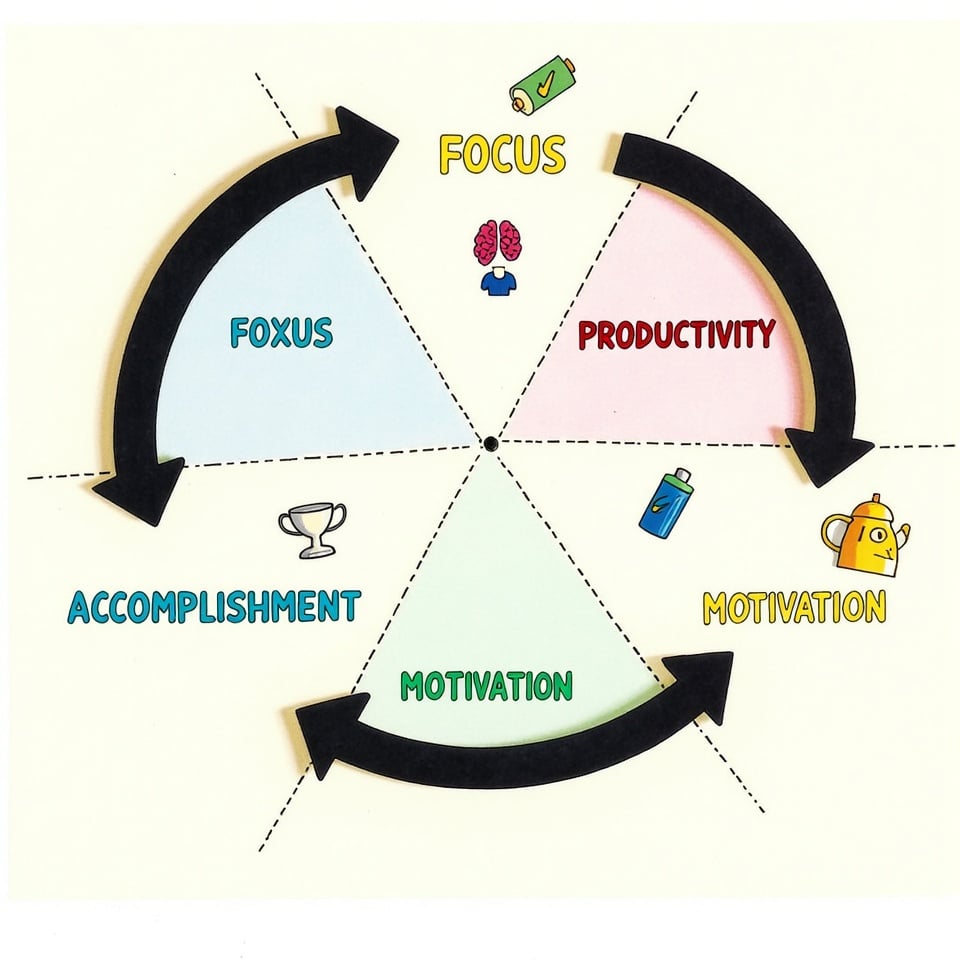Exclamatory sentences are the emotional powerhouses of language that infuse our communication with energy, urgency, and passion. This comprehensive guide explores the essence of these expressive statements, their structure, and their crucial role in both written and spoken language.
From understanding their basic form to mastering their effective use, we’ll examine how exclamatory sentences convey strong emotions, grab attention, and add emphasis to our messages. Whether you’re a student, writer, teacher, or language enthusiast, this guide will enhance your grasp of exclamatory sentences and their impact.
You’ll discover:
- What defines an exclamatory sentence and its key characteristics
- Common words and phrases that amplify exclamatory impact
- How to construct exclamations starting with “What,” “How,” “So,” and “Such”
- The importance of exclamatory sentences in various forms of communication
- Effective techniques for using exclamations, including with interjections
- Essential points to remember when incorporating exclamations in your writing
By the end of this guide, you’ll be equipped to craft powerful exclamatory sentences that express emotions, emphasize key points, and engage your audience with precision and impact.
Table of Contents
Ready to master the art of exclamation?
Let’s explore the dynamic world of exclamatory sentences!
What is an exclamatory sentence?
An exclamatory sentence is a type of sentence used to express strong emotions, sudden feelings, or intense reactions. These sentences are characterized by their heightened emotional content and typically end with an exclamation mark (!).
Exclamatory sentences serve to convey a wide range of emotions, including excitement, surprise, anger, joy, or frustration. They often have a more forceful or emphatic tone compared to other sentence types, such as declarative or interrogative sentences.
In writing, exclamatory sentences help authors inject energy and emotion into their text, making it more engaging and expressive. In spoken language, they reflect the natural way people express strong feelings in everyday conversation.
Some key features of exclamatory sentences include:
- Strong emotion or emphasis
- Often shorter in length than other sentence types
- Usually end with an exclamation mark
- May begin with “What” or “How”
- Can be a full sentence or a fragment
Examples of exclamatory sentences
Exclamatory sentences can be found in various contexts and express a wide range of emotions. Here are some examples to illustrate their usage:
1. Expressing joy or excitement:
- We won the lottery!
- What an amazing performance that was!
- I got the job!
2. Showing surprise or disbelief:
- I can’t believe you’re here!
- How unexpected this turn of events is!
- You’ve grown so much since I last saw you!
3. Conveying anger or frustration:
- That’s the last straw!
- How dare you speak to me like that!
- I’ve had enough of your excuses!
4. Expressing fear or alarm:
- Look out for that falling branch!
- There’s a spider on your shoulder!
- The house is on fire!
5. Showing admiration or awe:
- What a talented musician she is!
- How beautifully the garden has bloomed!
- You’ve accomplished so much in such a short time!
6. Expressing sympathy or concern:
- What a terrible accident!
- How awful you must feel!
- I’m so sorry for your loss!
7. Conveying urgency or importance:
- Hurry up, we’re late!
- Don’t forget your passport!
- Stop that thief!
8. Expressing relief:
- Thank goodness you’re safe!
- What a relief to finally be home!
- I’m so glad that’s over!
These examples demonstrate how exclamatory sentences can effectively convey a variety of emotions and reactions in different situations. They add emphasis and energy to communication, making language more expressive and engaging.
Common words used in exclamatory sentences
Exclamatory sentences often employ specific words and phrases to enhance their emotional impact. These words help to convey the intensity of the feeling or reaction being expressed. Here are some common words and phrases frequently used in exclamatory sentences:
1. Interjections:
Wow!, Oh!, Yay!, Ouch!, Aha!, Yikes!
2. Intensifiers:
So (e.g., “That was so amazing!”), Such (e.g., “Such a beautiful day!”), Very (e.g., “Very well done!”), Extremely (e.g., “Extremely impressive work!”)
3. Emphatic adjectives:
Incredible, Fantastic, Terrible, Wonderful, Awful, Magnificent
4. Introductory words:
What (e.g., “What a surprise!”), How (e.g., “How beautiful!”)
5. Emphatic phrases:
- Of all the…
- Never in my life…
- For goodness’ sake…
- In the world… (e.g., “What in the world were you thinking!”)
6. Time-related words for immediacy:
Now, Immediately, Instantly
7. Superlatives:
Best, Worst, Most, Least
8. Emotional verbs:
Love, Hate, Adore, Detest
9. Exclamatory question words (rhetorical):
Isn’t, Aren’t, Doesn’t, Didn’t
These words and phrases help to elevate the emotional tone of exclamatory sentences, making them more impactful and expressive. They allow speakers and writers to convey their feelings more vividly and emphatically, enhancing the overall communicative effect of their statements.
Exclamatory sentences beginning with:
“What:”
Exclamatory sentences beginning with “What” are commonly used to express surprise, amazement, or strong reactions to a noun or noun phrase. These sentences typically follow the structure “What + (a/an) + adjective + noun + subject + verb!” They emphasize the exceptional nature or degree of something. For example:
- What a beautiful sunset we saw today!
- What an incredible achievement you’ve made!
- What delicious food they serve at this restaurant!
These sentences effectively convey the speaker’s strong feelings about the subject, drawing attention to its remarkable qualities.
“How:”
Exclamatory sentences starting with “How” are used to express intense feelings about the degree or extent of a quality or action. They often follow the pattern “How + adjective/adverb + subject + verb!” These sentences highlight the extreme nature of a characteristic or action. Examples include:
- How quickly time flies!
- How beautiful she looks in that dress!
- How cleverly he solved that problem!
“How” exclamations allow speakers to emphasize their astonishment or admiration regarding the intensity of a particular quality or action.
“So:”
Exclamatory sentences using “So” at the beginning emphasize the extreme degree of a quality or state. They typically follow the structure “So + adjective/adverb + subject + verb!” These sentences express strong emotions about the intensity of a characteristic. For instance:
- So excited I am for the concert tonight!
- So gracefully she dances on stage!
- So delicious this cake tastes!
“So” exclamations effectively communicate the speaker’s overwhelming feelings about the degree of a quality or state.
“Such:”
Exclamatory sentences starting with “Such” are used to express strong feelings about the quality or nature of something. They often follow the pattern “Such + (a/an) + adjective + noun!” These sentences emphasize the remarkable nature of a person, thing, or situation. Examples include:
- Such a brilliant idea you’ve come up with!
- Such talent she possesses!
- Such an exciting adventure we had!
“Such” exclamations allow speakers to convey their intense reactions to the notable qualities or characteristics of something or someone.
Why exclamatory sentences are important
Exclamatory sentences play a crucial role in both written and spoken communication, serving several important functions. They add emotional depth and expressiveness to language, allowing speakers and writers to convey feelings with greater intensity and impact.
In literature and creative writing, exclamatory sentences help authors bring their characters and scenes to life. They can quickly communicate a character’s emotional state or reaction, making the narrative more engaging and relatable. For example, “What a disaster this day has been!” immediately conveys a character’s frustration or disappointment.
In everyday conversation, exclamatory sentences help express urgency or importance. They can grab attention quickly, which is vital in situations requiring immediate action. A sentence like “Watch out for that car!” carries more weight and immediacy than a simple statement.
These sentences also enhance the overall tone and mood of communication. In speeches or presentations, well-placed exclamations can energize an audience and emphasize key points. They help maintain listener engagement and can make messages more memorable.
In persuasive writing, exclamatory sentences can be powerful tools for evoking emotional responses from readers. They can help create a sense of excitement, outrage, or enthusiasm that supports the writer’s argument or call to action.
Furthermore, exclamatory sentences reflect natural speech patterns, making written dialogue more authentic. They help capture the nuances of human expression, bridging the gap between written and spoken language.
In digital communication, where tone can be difficult to convey, exclamatory sentences provide valuable emotional context. They help prevent misunderstandings and add warmth to text-based interactions.
Overall, exclamatory sentences are important because they inject emotion, urgency, and emphasis into language, making communication more dynamic, expressive, and effective across various contexts.
How to use exclamatory sentences effectively
To use exclamatory sentences effectively, it’s important to strike a balance between impact and overuse. Here are some key guidelines:
1. Use sparingly: Overusing exclamatory sentences can diminish their impact and make writing seem melodramatic. Reserve them for truly emphatic moments.
2. Vary sentence structure: Mix exclamatory sentences with other types to maintain a natural flow in your writing.
3. Consider context: Ensure the tone of your exclamatory sentences matches the overall tone of your writing or speech.
4. Be genuine: Use exclamatory sentences to express real emotion or emphasis, not as a crutch for weak writing.
5. Pay attention to punctuation: While exclamation marks are typical, sometimes a period can be more impactful, allowing the words themselves to convey the emotion.
6. Use in dialogue: Exclamatory sentences can make character speech more realistic and expressive.
7. Emphasize important points: In non-fiction or persuasive writing, use exclamatory sentences to highlight key ideas or calls to action.
8. Match the intensity: Ensure the wording of your sentence matches the level of emotion you’re trying to convey.
Exclamative sentences with interjections
Interjections are words or phrases used to express strong emotion or sudden feeling. When combined with exclamatory sentences, they can create particularly emphatic expressions. Here’s how to use them effectively:
1. Choose appropriate interjections: Select interjections that match the emotion you’re trying to convey. For example:
- Joy: “Hurray! We won the championship!”
- Surprise: “Wow! I didn’t expect to see you here!”
- Frustration: “Argh! I can’t believe I forgot my keys again!”
2. Position interjections correctly: They can be used at the beginning, middle, or end of a sentence:
- Beginning: “Ouch! That really hurt!”
- Middle: “That was, good grief, the worst performance I’ve ever seen!”
- End: “The prices have gone up again, yikes!”
3. Use punctuation effectively: Interjections are often followed by an exclamation mark, but a comma can also be used for a softer effect:
“Oh! I forgot to buy milk.”
4. Don’t overdo it: As with all exclamatory sentences, use interjections judiciously to maintain their impact.
5. Consider your audience: Some interjections may be too casual or informal for certain contexts, so choose them wisely based on your audience and the setting.
Points to remember when suing exclamatory sentences
There are some points that we should remember when using exclamatory sentences. While these sentences can be powerful tools for expression, their effectiveness depends on appropriate and judicious use. Consider the following guidelines to ensure your exclamatory sentences enhance rather than detract from your communication.
Avoid using in academic writing
Academic writing typically requires a formal, objective tone. Exclamatory sentences can undermine the credibility of your work by appearing too emotional or subjective.
Be cautious in professional emails
While exclamatory sentences can add warmth to communication, overuse in professional settings may appear unprofessional or overly familiar.
Consider the medium
Exclamatory sentences may be more appropriate in spoken presentations or informal writing than in formal documents or reports.
Use alternatives for emphasis
Instead of relying on exclamation marks, consider using strong vocabulary, data, or well-constructed arguments to make your point.
Be aware of potential ambiguity
Some exclamatory sentences can be misinterpreted. Ensure your meaning is clear, especially in written communication where tone can be difficult to convey.
Maintain consistency in marketing materials
If using exclamatory sentences in advertising or marketing, ensure they align with your brand voice and don’t overwhelm your message.
Conclusion
Exclamatory sentences are powerful tools in language, adding emotion and emphasis to communication when used effectively. They can convey strong feelings, create urgency, and engage audiences across various contexts. However, their impact relies on judicious use. By understanding their structure, function, and appropriate contexts, writers and speakers can harness the power of exclamatory sentences to enhance their message without overwhelming their audience.
Remember to consider your audience, medium, and purpose when incorporating these emotive expressions into your communication. Exclamatory sentences may not be suitable for all situations, particularly in formal or academic writing. In professional settings, use them sparingly to maintain credibility and avoid appearing overly emotional or unprofessional.
When used skillfully, exclamatory sentences can significantly elevate the expressiveness and impact of your language. They allow you to inject passion, surprise, or urgency into your writing or speech, making your message more engaging and memorable. By mastering the art of exclamation, you can create more dynamic and impactful communication across various personal and professional contexts.
FAQs
What is an exclamatory sentence?
An exclamatory sentence expresses strong emotions or sudden feelings, typically ending with an exclamation mark. It’s used to convey excitement, surprise, anger, joy, or other intense reactions.
What are examples of exclamatory sentences?
- “What a beautiful sunset!”
- “I can’t believe we won the lottery!”
- “How dare you speak to me like that!”
- “Watch out for that car!”
- “Congratulations on your promotion!”
What are common exclamatory words in grammar?
Common exclamatory words include interjections (Wow!, Oh!, Yay!), intensifiers (so, such, very), and introductory words like “What” and “How”.
What is the structure of an exclamatory sentence?
Exclamatory sentences often follow patterns like:
Exclamatory sentences are used to express strong feelings or emotions like surprise, excitement, anger, or joy. They always end with an exclamation mark (!) and have specific patterns in English.
Here are the common patterns:
- “What + (a/an) + adjective + noun + subject + verb!”
- “How + adjective/adverb + subject + verb!”
- “So/Such + (a/an) + adjective + noun!”







